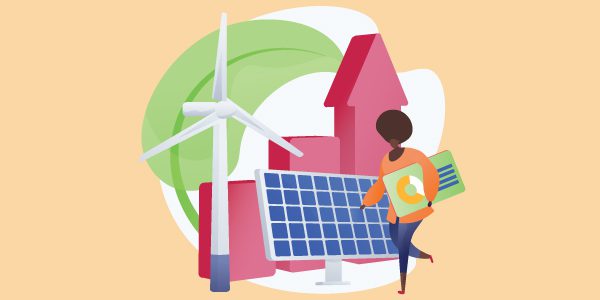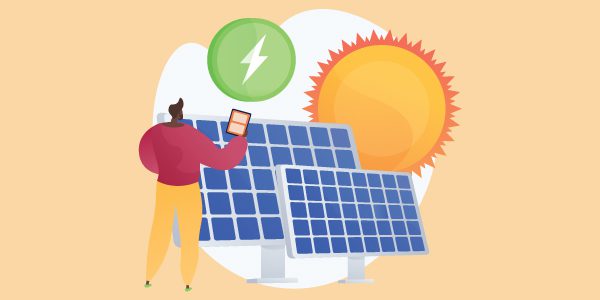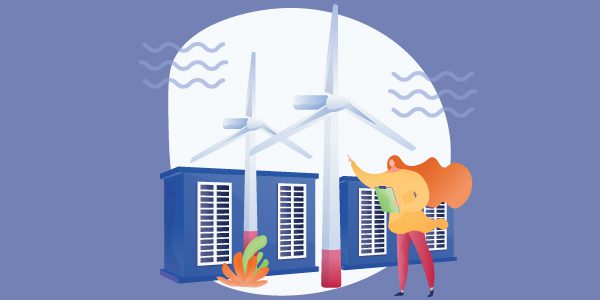Offshore wind has been highly successful overseas, with China, Germany and the UK leading the way.
Only last year did the Australian Government introduce the Offshore Electricity Infrastructure Bill 2021, which facilitates and regulates offshore wind facilities on Australia’s waters. Since then, there are over 20 offshore wind farms in development across the country.
At face value, offshore wind remedies the issues that onshore projects have. Viable land isn’t taken up, no noise for neighbours (as there are none), and it doesn’t disrupt the natural landscape. Additionally, offshore wind farms are more efficient than their onshore counterparts, clocking 3.5MW compared to the average of 2.5-3 for land turbines. In conjunction with more than 85% of the Australian population living within 50km of the coast – offshore wind will be a good option for Australia. The positives are clear and as the Federal Government has now made it possible and state governments are funding these projects, clearly they see its worth.
However, the real question is: is Australia ready for it?
Challenge 1: Infrastructure Readiness
One of the biggest hindrances to the renewable energy transition, which is certainly not unique to Australia, is the lack of infrastructure and / or the need for it to be modernised. Offshore wind is a new ballgame; we’re dealing with volatile conditions (i.e. the ocean), and as this is new to Australia, some unique problems and setbacks will occur, and we need to be prepared.
One of the significant infrastructure questions is related to the utility infrastructures. Infrastructures such as substations, transmission lines are critical to connect and distribute the energy generated from turbines to the grid. Therefore, it’s ideal for offshore wind projects to be located as close to the existing substations as possible. This will make it easier and quicker for offshore wind power to be utilised. Additionally, the environmental impact is significantly less as the structures have already been developed.
The question of how to hold the turbine needs to also be answered. According to the International Renewable Energy Agency, rooted turbines are restricted to water up to 50 metres deep. In deep water, the traditional turbine infrastructure is not sufficient. Therefore, it will require the use of floating foundations to make it feasible. A benefit of floating turbines is that they are less impactful on the environment. However, it’s still relatively new, and while there have been some successful projects utilising this technology, it’s still more expensive than fixed-bottom turbines.
Challenge 2: Costs
Dealing with a high water depth and requiring maritime engineering to build the structures – its upfront installation costs are high. The average upfront cost in 2018 for a 1000MW offshore wind project was estimated to be more than US$4 billion, according to the International Energy Association. Comparing this to onshore which roughly costs US$1.75 billion, it’s more than double. In saying that, the IEA predicts costs to drop as much as 40% over the next decade.
While the costs are high, with so much state and federal government support, and lots of international interest to bring offshore projects to our shores – the prices should become reasonable in time, especially as projects increase.
Challenge 3: Environmental Impact
While onshore wind projects have their own negative impact on the area’s ecology, offshore wind projects have its problems. Conversely, offshore wind is still burgeoning, the adverse effects aren’t fully realised yet. However, there are already some issues, which are based on:
– Ecosystem Disruption
Of course, there will be a disruption from the building of any structure, whether it be on land or in the ocean. Habitats can be easily destroyed by sticking a pylon through them. However, there have been instances of artificial reefs (which can be made up of steel structures and even shopping trolleys) have brought flora and fauna to the area and created their own habitat. This phenomenon has also occurred on offshore wind turbines in the US. Additionally, research has found that the pylons going into the far depths of the ocean are increasing benthic (hard bottom fauna such as; mussels, oysters and sponges that lie on the seabed) habitats.
– Underwater Noise
The ocean is a noisy place. For many marine animals, sound is used as a means of survival and are consequently (depending on the species) sensitive to it. Disruptive noise can impact group cohesion, and survival behaviour cues and cause hearing loss. Additionally, while still largely unknown, there have been concerns about the effect wind farm noise may disrupt fish chorusing which can consequently affect successful reproduction and physiological alterations, to name a few. An Impact analysis conducted before construction has been put forward as a possible solution to mitigate the impact.
– Electromagnetic Fields
With the need for electric infrastructure to transmit the energy harnessed from offshore wind to the electricity grid, electromagnetic pulses will be transmitted. This can have a massive impact on sharks, rays and skate, as they use electromagnetic fields to sense prey and as such, are highly sensitive to it. While this can’t be prevented, it could be mitigated by conducting impact analysis prior to construction.
– Community impact
The environmental impact is not just for the animals but also for humans! As we’ve seen with lithium mining and solar farms, environmentalists and renewable energy enthusiasts bump heads. Additionally, Australians are a bit more conservative when it comes to projects, especially those that disrupt the natural lay of the land. While offshore wind is not directly on the shore – the closest farm thus far is only 7km away. Getting the community onside is critical – their opinion matters and can influence politicians, putting offshore wind projects in jeopardy.
Challenge 4: Experience / Manpower Shortage
Australia has a skills shortage. A highly specialised form of project that requires nautical engineering expertise is certainly not easy to find at the best of times. And now? Near impossible. The benefit we have, though, is time. With offshore wind projects only just coming into development, we can lay the groundwork now to ensure that by the time they’re ready to be functioning, we have a workforce that can do it.
Investing in conversion programs for graduates, developing specialised colleges, and retaining existing skills from the oil and gas industries have been put forward as solutions. Transferable skills are particularly key. Those working in the fossil fuel industry (particularly those offshore) have the necessary skills to help in offshore wind farms and really any renewable energy project. With renewable energy becoming more prominent and fossil fuels phasing out (and consequently, jobs are being lost), we can provide work for displaced employees and fill our skills gap.
We should also look globally. Offering visas to experts and professionals from countries where offshore wind has matured, such as Denmark, would be an option. Their experience and knowledge are vital and can help prevent mistakes made in the past and train Australian workers.
Challenge 5: Maintenance
Offshore wind O&M (operations and maintenance) is another issue facing this particular renewable energy. The complex marine maintenance that needs to be undertaken requires engineer divers; with engineering job vacancies in Australia up 176%, the likelihood of finding those qualified divers is slim to none. Additionally, O&M make up 25 – 30% of the total lifecycle costs for offshore wind farms. Turbines require maintenance to remain efficient. And unfortunately, we are still in the early stages of finding and testing new methods to make the process simpler, less time-consuming, and safer.
On the bright side, there have been many proposals to efficiently maintain offshore wind farms. One of the most interesting was the use of jet packs. While they are initially being trialled with paramedics to respond to offshore wind emergency incidents, this could potentially become something technicians can use in the future.
Offshore wind can change Australia’s renewable energy landscape for the better. It’s even better as we have the advantage of having a clean slate – we can learn from other countries and build our offshore wind farms without making the same mistakes. However, as with any new (and very exciting!) project, we must be prepared. While offshore wind has a lot of promise, we must be mindful of our impact on the ocean and our communities. We need to do right by them to ensure cohesion and support.












